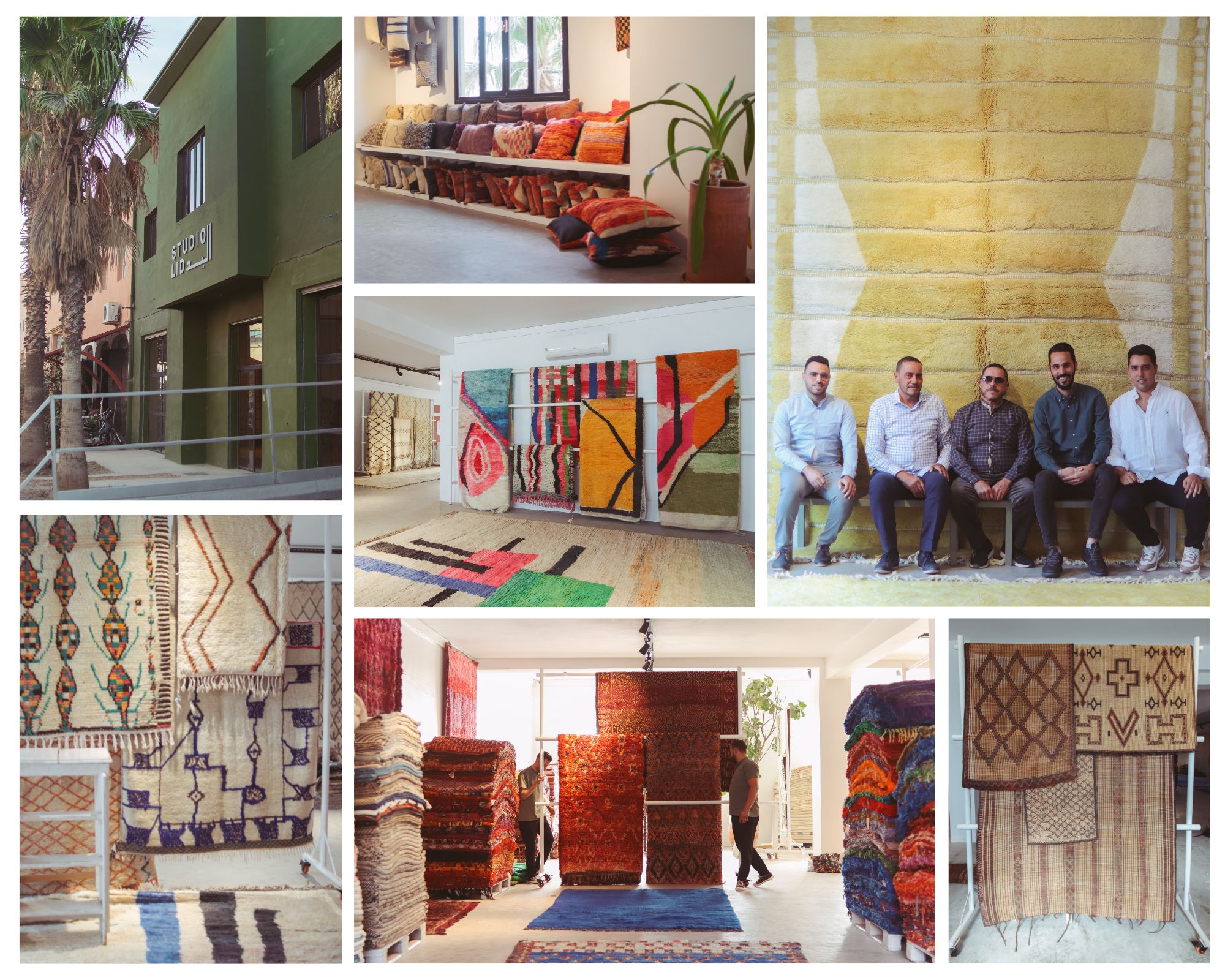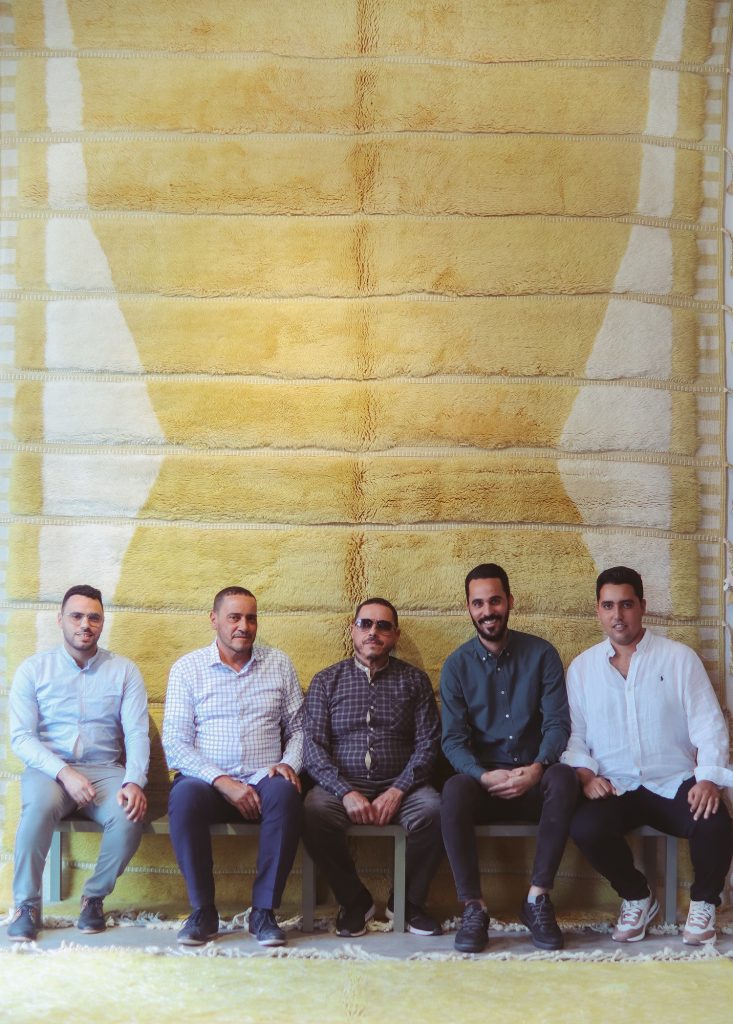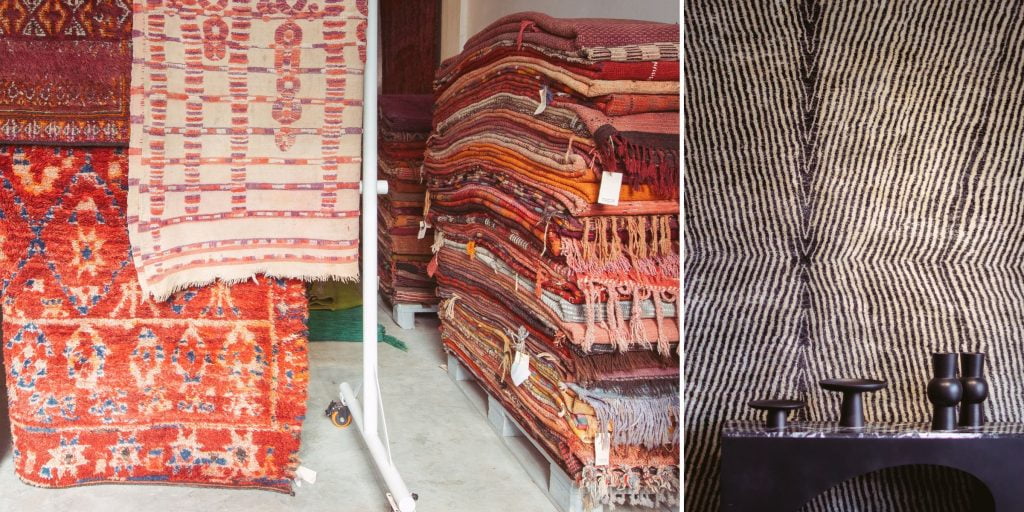
The Artisans of Morocco – Studio LID
In an ever-changing world, we talk to two brothers who are taking their carpet business international
Yazid Lamdaghri’s father Sherif didn’t believe in giving his children a free pass.
So when 15-year-old Yazid decided he wanted to follow in his footsteps into the carpet business – while still studying at school – Sherif agreed to give him six months rent free shop space. After that, he was going to have to pay his way.

Yazid had spent two years convincing his father to let him take over the small shop space in the medina where his grandfather Mohammed had started selling carpets in 1940 – earning a reputation as one of the favoured dealers of clients including Yves Saint Laurent. His sons Sherif, Ismail and Larbi then followed in his footsteps, expanding the business by travelling to international sales and producing new rugs to order for overseas clients.
Watching them at work, Yazid decided that he too wanted to go into the business. So from the age of thirteen, he would join his father after school to learn about the trade: going to auctions, listening quietly during meetings with clients, observing why they chose certain pieces, what made one rug worth a lot more than another. And soon he also started buying and selling boucherite rag rugs.

Now he wanted his own shop.
Six free months was Sherif’s limit however. After that, Yazid was going to have to finance the rent. And he was going to need help to do it.
At night, he’d talk to his older brother Rachid as the family sat around the dinner table, telling him about all the different styles of carpets, their history, the stories woven into the patterns and shapes. Rachid however was studying business at university. He wasn’t that interested.
But he had one thing Yazid didn’t: a driver’s licence.
‘I needed Rachid to drive me into the mountains so I could buy enough pieces to sellI,’ says Yazid, as the brothers sit side by side today in their Studio Lid showroom. ‘But I also wanted him to fall in love with carpets just as I had.’
The plan worked. As Rachid started driving Yazid into the Atlas Mountains to strike deals, he too was slowly captivated by the history, culture, stories and ideas embodied in the rugs. And when their father died unexpectedly in 2015, the two brothers decided to join their uncles full-time in the family business. Yazid was eighteen and Rachid twenty-four.

Almost a decade on, they’re no longer based in that tiny medina shop. Today, the brothers and their uncles work from a huge showroom in Sidi Ghanem, an industrial area on the outskirts of Marrakech that’s home to the city’s largest creative ateliers. And together with their uncles, they’re navigating the constantly evolving backdrop of the Moroccan carpet trade.
Studio Lid started producing new rugs to order about 20 years ago but the majority of their business was still buying and selling vintage pieces. Today however, that’s all changing as the popularity of old carpets means they’re in ever dwindling supply. The reputation of Moroccan rugs has also travelled far beyond its borders and older pieces, often woven to fit in small homes in the mountains, don’t fit the bigger dimensions of houses in the US and Europe.

Today about 80% of the rugs that Studio Lid sells are new – either created bespoke for clients using Yazid’s designs or part of a range they launched three years ago of new carpets made using wool recycled from old rugs.
‘The wool is taken, washed and repurposed and we design according to what we have,’ says Yazid. ‘The warp and weft is new but the knots are old and we usually use about three old carpets to create one new. It means we can combine the vintage feel of older materials with new designs.’
Today Studio Lid sends its carpets all over the world: kilims to Ibiza, huge multi-coloured designs to London and even a ten by six metre reproduction of Picasso’s Guernica for a Los Angeles home.

Another shift the brothers have seen in recent years is in the domestic market. Wealthy Moroccans, who used to mostly buy Turkish rugs for their homes, have a new appreciation of their own cultural heritage and this market is expanding.
But then and now, the heart of the carpet trade is still the women who do the weaving, their creativity and imagination creating the intensely personal, fluid pieces that are the signature of Moroccan rugs.

Today Studio Lid works with some three hundred women working from fifteen ateliers they’ve established in the Middle Atlas. Working freelance, the women are able to fit their hours around their caring responsibilities and are paid by the square metre.
‘Rural Morocco is still traditional and the women there have responsibilities at home,’ says Rachid. ‘So we make sure they can do whatever hours they want – for some it’s just a couple, others do a whole day – but it suits them because the work is flexible.
‘It’s vital for us though that the women are happy in their work. They are the most important part of all this after all.’


